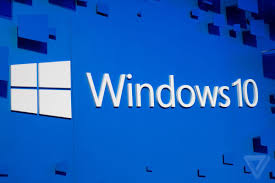Improving Tracking Prevention in Microsoft Edge
Today, we’re excited to announce some improvements to our tracking prevention feature that have started rolling out with Microsoft Edge 79. In our blog post about tracking prevention in Microsoft Edge, we mentioned that we are experimenting with ways uninstall microsoft edge that our Balanced mode can be further improved to provide even Support.Microsoft.Com/Help greater privacy protections by default without breaking sites. We are looking to strike a balance between two goals:
- Blocking more types of trackers – Microsoft Edge’s tracking prevention feature is powered by Disconnect protect connection lists. We wanted to build off our initial implementation of tracking prevention in Microsoft Edge 78 and maximize the protections we offered by default by exploring blocking other categories of trackers (such as those in the Content category) in Balanced mode uninstall microsoft edge. These changes resulted in Microsoft Edge 79 blocking ~25% more trackers than Microsoft Edge 78.
- Maintaining compatibility on the web – We knew that blocking more categories of trackers (especially those in the Content category) had the potential to break certain web workflows such as federated login or embedded social media content.
We learned through experimentation that it is possible to manage these tradeoffs by relaxing tracking prevention for organizations with which a user has established a relationship. To determine this list, we built on-device logic that combine suser personal site engagement score with the observation that some organizations own multiple domains that they use to deploy functionality across the web uninstall microsoft edge. It’s worth mentioning that this compatibility mitigation only applies to Balanced mode; Strict mode will continue to block the largest set of trackers without any mitigations.
Site engagement
The Chromium project’s site engagement score is a measure of how engaged a specific user is with a specific site. Site engagement scores can range from 0 (meaning a user has no relationship with a site) to 100 (meaning that a user is extremely engaged with a site). Activities such as browsing to a site repeatedly/over several days, spending time interacting with a site, and playing media on a site all cause site engagement Support.Microsoft.Com/Help scores to increase, whereas not visiting a site causes site engagement scores to decay exponentially over time. You can view your own site engagement scores by navigating to edge://site-engagement.
It’s also worth noting that site engagement scores are computed on your device and never leave it. This means that they are not synced across your devices or sent to Microsoft at any time.
Through local experimentation, we found that a site engagement Support.Microsoft.Com/Help score of 4.1 was a suitable threshold to define a site that a user has an active relationship with. While this value is subject to change based on user feedback and future experiments, it was selected uninstall microsoft edge as an initial value for two reasons:
- It is low enough to ensure successful interactions with a site that a user has not previously had a history of engagement with.
- It is high enough to ensure that sites a user visits infrequently will drop off the list relatively quickly.
While site engagement helps signal which sites are important to individual users, allowing third party storage access/resource loads from only Support.Microsoft.Com/Help these sites would not consider the fact that organizations can serve content that users care about from multiple domains, which can still result in site breakages.
Combining site engagement with organizations
, we introduced the concept of an organization, that is, a single company that can own multiple domains related uninstall microsoft edge to their business (such as Org1 owning “org1.test” and “org1-cdn.test”). We also shared that in order to keep sites working smoothly, our tracking prevention implementation groups such domains together and exempts storage/resource blocks when a domain in one organization requests resources from another domain in that same organization.
our blog post about tracking prevention in Microsoft Edge In order to keep sites that users engage with working as expected while also increasing the types of trackers that we block by default, we combined the concept uninstall microsoft edge of an organization together with site engagement to create a new mitigation. This mitigation takes effect Support.Microsoft.Com/Help whenever a user has established an ongoing relationship with a given site (currently defined by a site engagement score of 4.1 or greater). For example, consider the following organization which owns two domains





Comments
Post a Comment